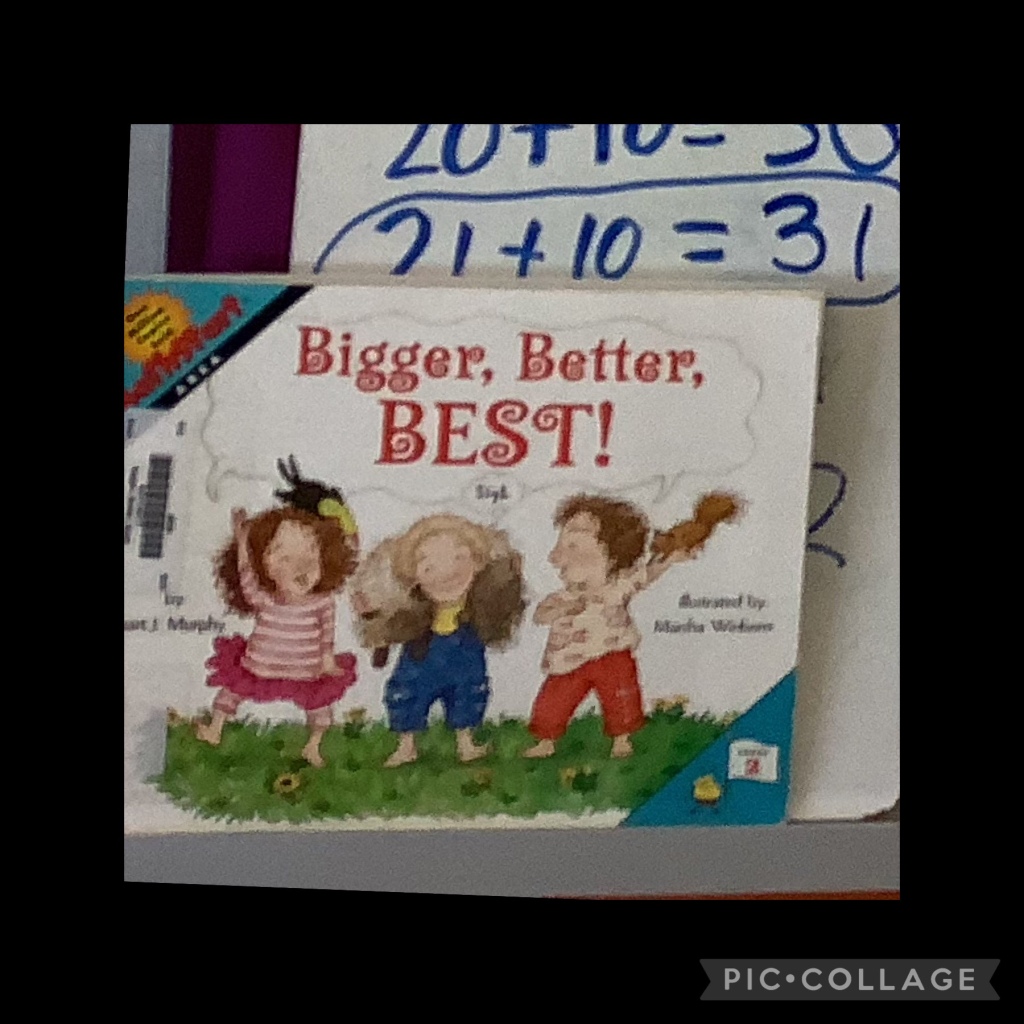
We’ve been working on multiplication and we’ve been having a good time doing it. It has taken about two weeks longer than anticipated, but I’m going to mostly blame snow days for that.
About a week ago I walked into the library and the book above was on display. It’s been in our library for a long time, judging by the state of it, but it’s a new to me title. I love these Math Start titles, and was so happy to discover that this book was going to help us move on to finding area.
In the book, the children are arguing over who has the bigger bedroom. They solve their fight using math. To measure their bedroom windows, their mom suggests using sheets of paper, and to measure the whole room they use sheets of newspaper. One child’s window takes two rows of paper with six in each row. The other child’s window is four rows of paper with three in each row. That lead to a fun discussion.
Then I set them up. We have several different kinds of tables in our classroom and I asked them to help me figure out which kind of table has the bigger top. We brainstormed a list of tools, and “sheets of paper” was added as a measuring tool. They also wanted sticky notes, but I only have tiny sticky notes so we decided to pass on trying those.
Next, everyone got to work.
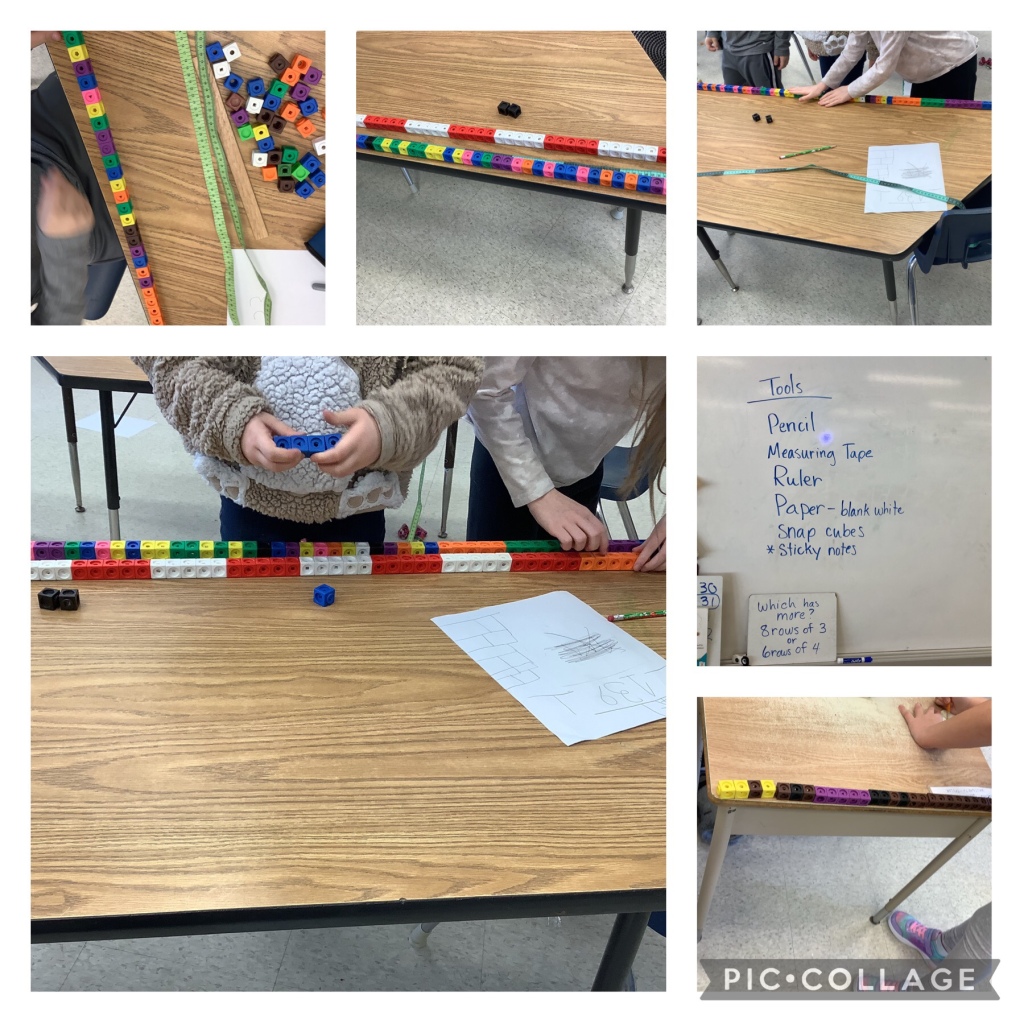
Everyone used their favourite tools to measure, but only one team used the sheets of paper. On the second day, we used the photos I took to have a “mid problem” math congress. I focused on the snap cubes and the sheets of paper, so on the second day when we took up the measuring again, more groups used those two tools.
One group was really finding the area, as opposed to other groups that got sidetracked with finding the length and width. It’s okay and we’ll work it out, but I really wanted to focus on the concept of area so we talked about this one a lot. We have several rectangular tables like this. As you can see, it takes two rows of paper with six sheets in each to cover the top. We did get them lined up pretty exactly, even though this picture doesn’t show that well. But we had a problem…
…it was really hard to lay out the paper on the trapezoid shaped tables. They arranged and rearranged but couldn’t quite get it. They then started to try measuring the leftover bits with other tools and we were finally saved by the bell and they had all night to figure out what to do.
The next day, this group was at it again. They tried several different layouts but couldn’t figure out what to do about the gaps. I stepped in to help. I put down a piece of paper so half was on the table and half was off. Then I took a pair of scissors and cut it. “There,” I said. “So we know it is ten pieces, plus at least two halves, so we’ve used eleven pieces so far.” This was met with silence, then they got to work. They needed a bit of help with some of the wee corners, but in all, we finally figured that it took thirteen pieces of paper to cover the top, and we would need a bit more so clearly this brown table has the larger surface area.
Unbeknownst to me, one of our kindergarten teaching teams has been hoping to get a different table into their class. On the second day of this investigation, my colleague posted a request asking if anyone had a smaller table they would be willing to trade. I showed this to the class and told them that I asked if by “smaller” she meant shorter or smaller area on top. She meant shorter, but also needed the table to fit in a certain spot, so the surface area needs to be just right too. They then set out to measure the height of all our tables, especially the one with the smallest surface area, so we could see if it would be a good trade. Not wanting to disturb the kindergarten class, I took just two of my students to measure her table so we could compare.
Are you dying to know the results?? Well, I think we’ll need to trade her for one of our adjustable tables. Her table and our adjustable tables have the same surface area, and the table we have that has a smaller surface area is the same height! I’m going to try to have the children present their results to the kindergarten teaching team one day this week so they can decide. It will be a good chance for my students to practice communicating.
There were so many good things that happened: we got to talk about using the snap cubes in groups of 5 so they are easier to count; we had reminders about centimeters and meters; we did some mathematical modelling; we had conversations about why the centimeter cubes need to be in a straight line (see how it curves in one of those pictures?); we had lots of opportunity to practice communicating our thinking and solutions.
This week we will spend more time talking about area specifically. We will also be talking about why it takes fewer snap cubes than pieces of paper to cover a table, and why it takes so many centimeter cubes compared to snap cubes.

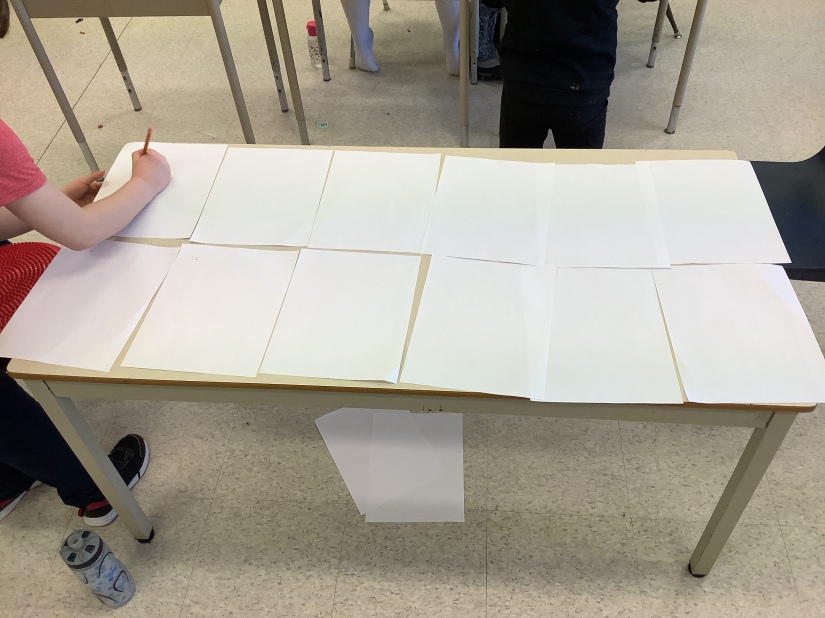
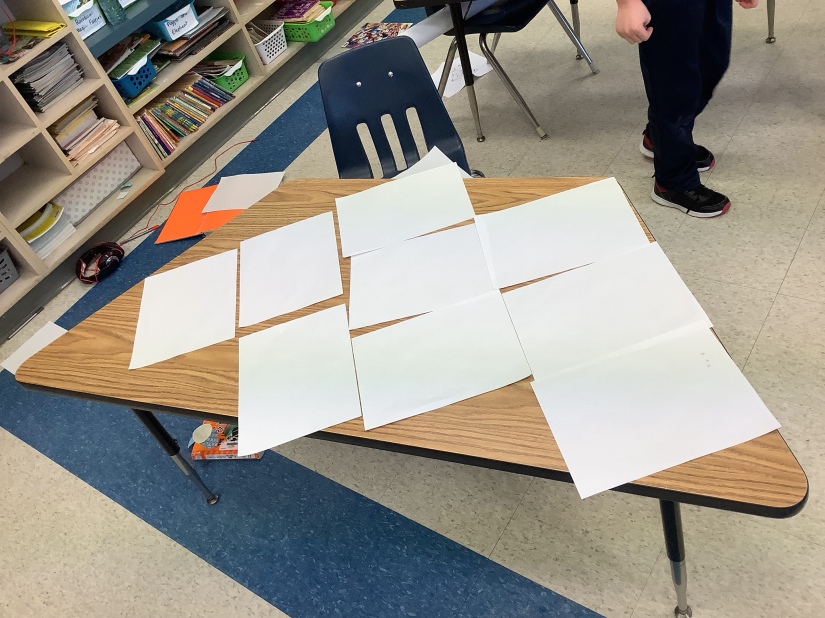
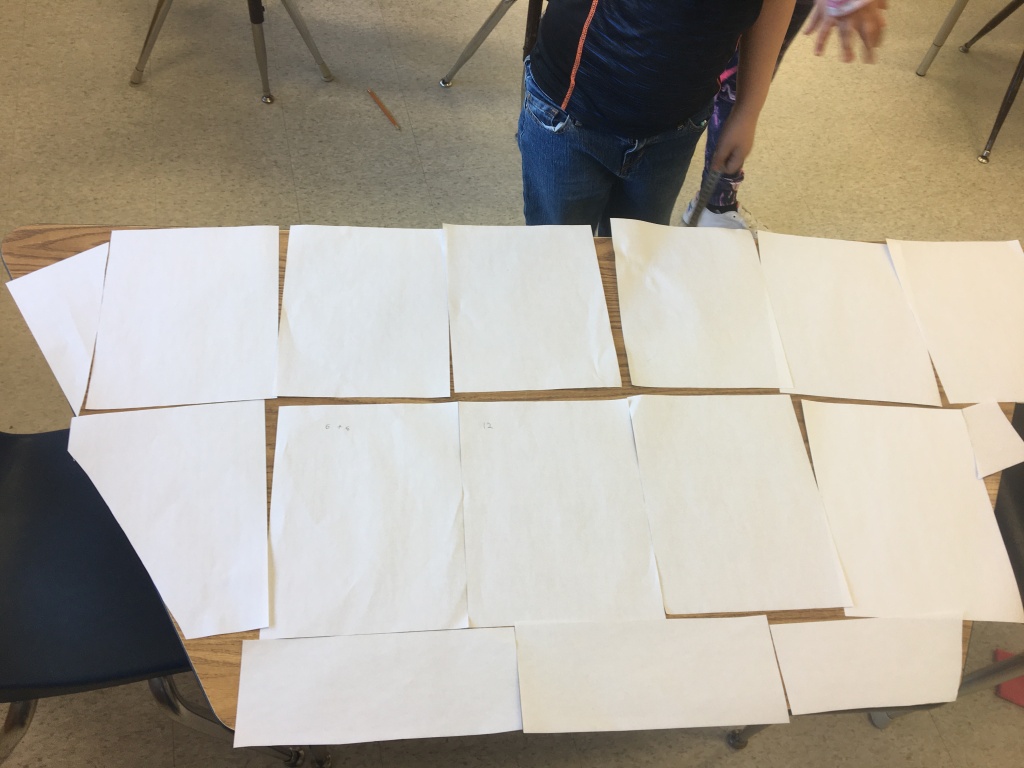
You must be logged in to post a comment.